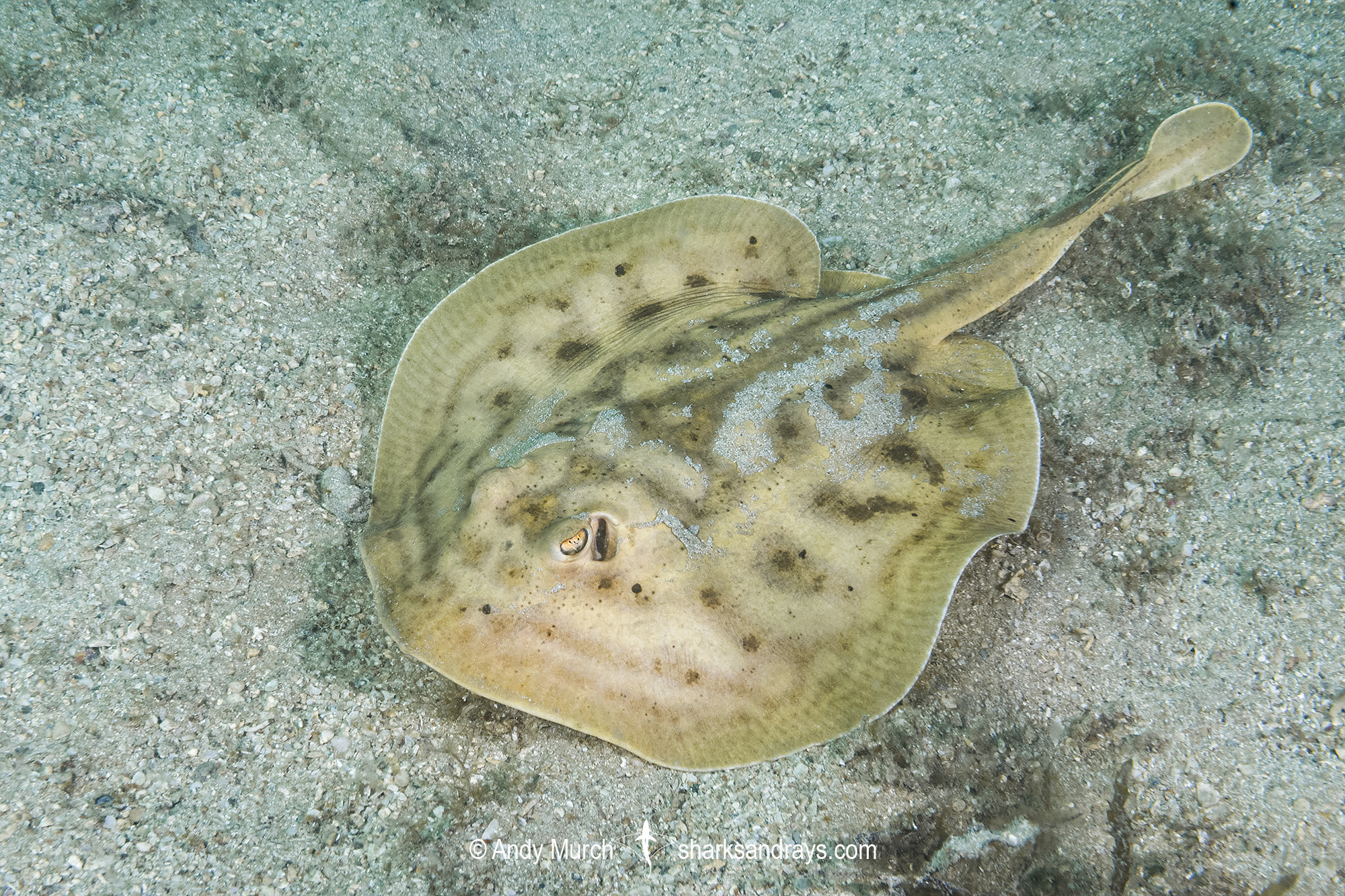Common name(s)
Bullseye Round Stingray, Reef Stingray.
Identification
A medium-sized round stingray with a sub-circular disc that is slightly longer than or equal to width; disc width 0.9-1.0 x disc length. Snout obtusely angular. Anterior margins of disc almost straight towards snout tip, apices evenly rounded. Disc completely smooth. Pelvic fins broadly triangular with rounded posterior margins, length slightly exceeding width.
Eyes medium-sized; orbit length 0.32-0.34 x snout length. Mouth weakly arched. Nasal curtain skirt-shaped. Nostrils slit-like.
Tail short and broad based, with lateral skin folds that are most prominent anterior to caudal sting. Tail length 47-48% of total length. Caudal sting short, length slightly shorter than caudal fin, origin posterior to mid tail. Caudal fin relatively long and deep, with a high upper lobe and a slightly indented posterior margin.
Colour
Dorsum beige to greyish-brown with concentric dark rings, thin saddles, and a dark stripe along midline. Eye yellowish-orange. Ventrum and lateral skin-folds on tail uniformly white.
Size
Total length 48cm. Length at birth unknown.
Habitat
Tropical/subtropical seas. Found on soft substrates in shallow bays, lagoons, and estuaries. From close inshore to 30m.
Distribution
Eastern Pacific. The bullseye round stingray is found from Isla Cedros on the west coast of southern Baja, and throughout the Sea of Cortez, southward to Bahía Huatulco in Oaxaca State.
Conservation Status
LEAST CONCERN
A considerable proportion of the species’ relatively restricted distribution overlaps with trawl fishing. The Kapala Stingaree is infrequently caught as bycatch in the Commonwealth Trawl Sector of the Southern and Eastern Scalefish and Shark Fishery (SESSF) (Walker and Gason 2007). This species is of no commercial value and is discarded when caught (Walker and Gason 2007).
It is a frequent bycatch in the Queensland East Coast Trawl Fishery (ECTF; Eastern King Prawn Sector), where it is often caught in small aggregations. It is also taken in the New South Wales Ocean Prawn Trawl Fishery.Where the species is taken as bycatch, a concern is the demonstrated low post-release survivorship of trawl caught stingarees (Campbell et al. 2018), and the fact that urolophids frequently abort pups upon capture and handling; even if gravid females survived capture, their reproductive output can be lost (White et al. 2001, Trinnie et al. 2009, Adams et al. 2018).
Citation
Kyne, P.M. & Bennett, M.B. 2019. Urolophus kapalensis. The IUCN Red List of Threatened Species 2019: e.T42730A68649607. https://dx.doi.org/10.2305/IUCN.UK.2019-1.RLTS.T42730A68649607.en. Downloaded on 26 March 2021.
Reproduction
Aplacental viviparous. Litter size unknown.
Diet
Probably small benthic invertebrates.
Behavior
Poorly known.
Reaction to divers
Skittish. Generally moves away once discovered but sometimes tolerant if approached carefully.
Diving logistics
The bullseye round stingray is commonly encountered while diving and snorkelling over sand or near rocky reefs in the southern Sea of Cortez. During March at Cabo Pulmo in southern Baja, I encountered numerous Bullseye stingrays on every dive at ~50ft. On a previous trip during the summer months, none were present implying that this ray has at least a minor migration, perhaps into slightly deeper water when inshore temperatures increase.
What’s new
View our full list of updates
Similar species
Haller’s Round Stingray Distinguished by longer tail and dorsum with small dense light and dark spots overlying a dark honeycomb pattern.
Spotted/Cortez Round Stingray Distinguished by more subtle or absent concentric rings, eye-sized dark spots, and small brown flecks.











